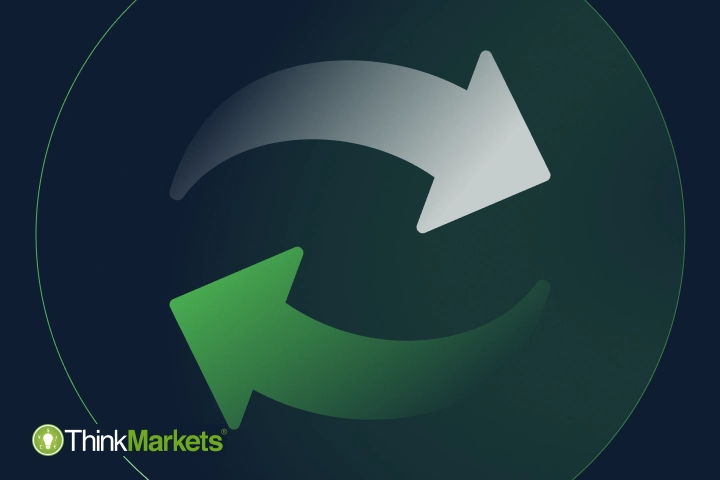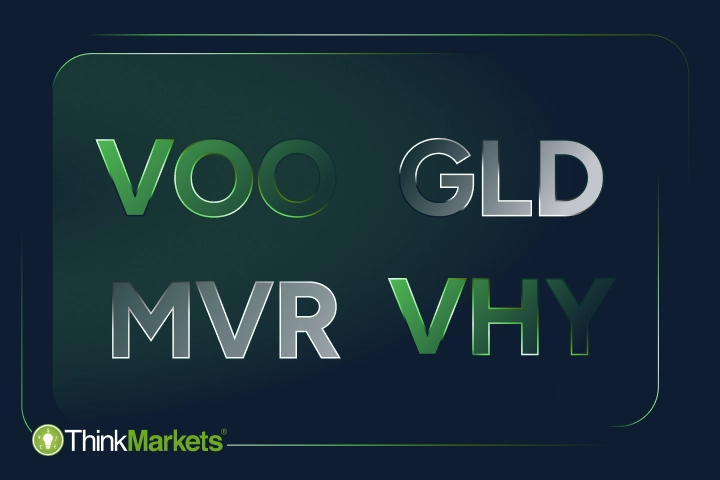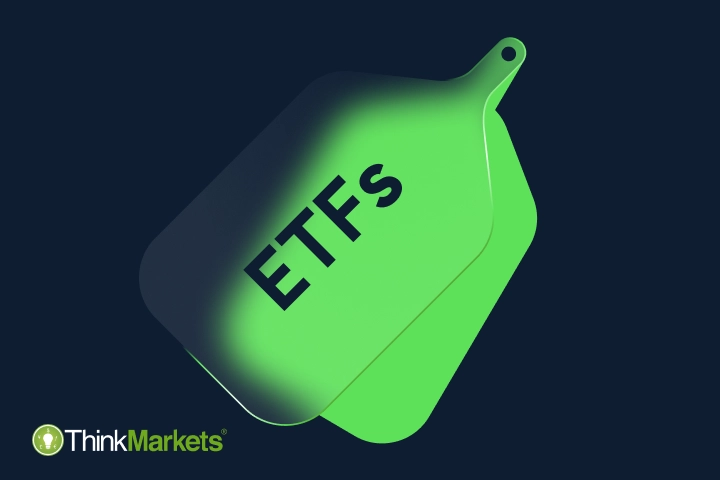Articles (3)

What are exchange-traded funds (ETFs)?
<p paraeid="{680c3ba2-76ab-40a3-bd58-2e3bfbba4153}{115}" paraid="25794553">In our previous trading guides we discussed indices and how they work. In this guide, we’ll talk about a type of security that is similar to indices – an exchange-traded fund. </p> <p paraeid="{680c3ba2-76ab-40a3-bd58-2e3bfbba4153}{157}" paraid="1833887751">Compared to stocks that have been available to traders for centuries, and indices capturing traders’ attention for over the last few decades, ETFs are a relatively new product on the market. The first ETF was created only in 1990 in Canada and was quickly picked up by other countries. Due to the numerous advantages of these funds, the capital invested in ETFs reached USD 1 trillion by 2009 – less than ten years since its creation – and this number has been growing since. </p> <p paraeid="{680c3ba2-76ab-40a3-bd58-2e3bfbba4153}{197}" paraid="494590131">In this article, we’ll explain what ETFs are, who creates them and how they compare to other financial instruments.</p> <h2>What are ETFs?</h2> <p>An exchange-traded fund (ETF) typically holds a collection of stocks or bonds, however they can also contain other financial instruments, such as commodities and cryptocurrencies. To a certain extent, ETFs are very similar to indices. However, there are also notable differences between these two instruments:<br /> <br /> <img alt="" src="/getmedia/df0cd55d-1a0d-4cc3-ab50-5afd2bcbf05f/article-what-are-etfs-comparison-vs-indices.webp" style="width: 552px; height: 263px;" /><br /> <br /> Analysts segregate ETFs into several categories depending on the types of instruments they are comprised of.</p> <h2>Types of ETFs</h2> <p>The most common way of categorising exchange-traded funds is by market, where each ETF tracks the performance of a particular set of underlying assets:</p> <h3>Index ETFs</h3> <p>Existing stock market indices, such as S&P 500.</p> <h3>Stock ETFs</h3> <p>Unique baskets of stocks grouped by industry, sector or location.</p> <h3>Commodities ETFs</h3> <p>Commodities, such as gold or oil.</p> <h3>Currency ETFs</h3> <p>Forex pairs individually or in groups.</p> <h3>Cryptocurrency ETFs</h3> <p>Individual cryptocurrency or a basket of digital currencies.</p> <h3>Bond ETFs</h3> <p>Stock market securities that governments, companies and other entities issue to raise capital. Bonds represent units of debt and an obligation to pay the full amount back, along with interest to the investors who buy them.<br /> <br /> Besides markets, ETFs can also be divided into active and passive, depending on how they are managed. Active ETFs are managed by portfolio managers who hand-pick securities included in them.<br /> On the other hand, the funds that track a stock market index, such as an index ETF, are usually considered passive as they don’t need active management.<br /> <br /> Actively managed funds usually have a higher expense ratio than passive ones, which means investors need to pay higher fees when buying ETFs. However, for active traders, there is no difference. <br /> <br /> It's worth mentioning that ETFs are quite often compared to index funds and mutual funds. All three types of securities are very similar in their structure, but there is a difference. An index fund is a passively managed basket of stocks identical to stock market indices used for investment purposes. A mutual fund is an actively managed basket of various stock market securities. The main difference between the three is that ETFs can be actively bought, sold and traded on a stock exchange during market hours just like regular shares, while investment in index and mutual funds can only be made once a day after at the end of the market session.<br /> <br /> Let’s see how ETFs work to give you a clearer idea of these instruments.</p> <h2>Who creates ETFs?</h2> <p>The entity behind an ETF creation is called an ETF issuer. It is usually an authorised market participant, such as large company. To create an ETF, they purchase all the instruments that are going to be included in it and issue ETF shares. This means that when you invest in an ETF, you technically buy shares of a bundle of shares.<br /> <br /> <img alt="" src="/getmedia/f0fd7180-667e-4a5b-8772-8c22b30cf536/article-what-are-etfs-creation.webp" style="width: 552px; height: 174px;" /><br /> <br /> A person purchasing ETF shares has a legal claim to the shares included in it and is entitled to receive dividends on stocks paying them.<br /> <br /> In some cases, an ETF issuer may involve another authorised market participant who will act as a sponsor responsible for purchasing the instruments within the ETF but will not manage it.<br /> <br /> It is important to note that while any person with sufficient funds is eligible for ETF creation, it is subject to approval from the US Securities and Exchange Commission or another entity with similar functionality, depending on the location.</p> <h2>Top 5 biggest ETF issuers</h2> <p>The current market offers a vast selection of companies providing various ETFs to traders and investors. However, just like in any other industry, there are giants dominating the market. Since the two largest stock market exchanges are located in the US, the top five ETF providers are also based in the US, managing the majority of ETFs. However, each of these companies has a wide net of international offices taking care of the ETFs outside the US.</p> <h3>BlackRock Financial Management</h3> <p>BlackRock is the world’s largest asset manager, offering hundreds of ETFs under the ticker iShares, such as iShares MSCI Emerging markets (EEM).</p> <h3>The Vanguard Group</h3> <p>Vanguard is the world’s second-largest ETF provider, managing a little under a hundred exchange-traded funds under the Vanguard ticker, such as Vanguard SP 500 (VOO) and Vanguard Australian Shares High Yield (VHY).</p> <h3>State Street Global Advisors</h3> <p>With over a hundred exchange-traded funds in its portfolio, State Street investment management company offers them under the SPDR ticker, such as SPRD gold trust (GLD).</p> <h3>Invesco LTD</h3> <p>The Invesco investment management company offers a wide range of services, along with hundreds of ETFs listed under the Invesco ticker, such as Invesco DB Commodity Index Tracking Fund (DBC).</p> <h3>ProFunds Group</h3> <p>Mutual funds provider and the owner of ProShares Advisors LLC, ProFunds group offers a few dozen exchange-traded funds under the ProShares ticker, such as ProShares Bitcoin Strategy ETF (BITO).</p> <h2>ETF tickers</h2> <p>Like any other financial instrument, each exchange-traded fund has a unique ticker symbol for easier tracking and identification. However, since ETFs are complex baskets of securities, their ticker symbols look a little different.<br /> <br /> The full name usually indicates the issuer and the underlying instrument, while the ticker symbol is used for tracking purposes. For example, SPDR gold trust is the full name of the ETF issued by State Street Global Advisors, tracking the price of gold. Its ticker symbol that you can see on our trading platforms is GLD.<br /> <br /> Some ETFs may also reflect the location of their issuance. For example, ETFs issued in Europe often have the UCITS abbreviation in their name. Keep in mind that an ETF’s origin may play a significant role in an investment portfolio due to associated taxes, but it does not matter for derivative trading.<br /> <br /> Let’s review the difference between ETF investing and ETF trading in our next article, <a href="/ky/trading-academy/etfs/how-to-trade-etfs">How to trade ETFs</a>.</p>

How to trade ETFs
<p>Like many other financial instruments on the stock market, you can invest and actively trade exchange-traded funds (ETFs). In this article, we’ll explore the difference between these two terms and review an example of an ETF CFD trade.</p> <h2>ETF investing</h2> <p paraeid="{5ad726ed-a254-4dd0-bca1-9a60545da1e0}{25}" paraid="1969427249">To draw a clear line, at ThinkMarkets, we consider anything that implies ownership as an investment. It may be buying an ETF and holding it for an extended period of time or buying and selling actively – in both cases, you acquire ownership of an instrument upon purchase, in this case, an ETF. </p> <p paraeid="{5ad726ed-a254-4dd0-bca1-9a60545da1e0}{39}" paraid="784156085">ETFs are one of the most popular forms of investment in the world due to their diversification, low expense ratio and tax efficiency. </p> <p paraeid="{5ad726ed-a254-4dd0-bca1-9a60545da1e0}{49}" paraid="434731094">When it comes to expense ratio, passive ETFs are the most cost-effective, but even actively managed ETFs can have lower fees than other investment instruments. These combing factors make ETFs a popular choice among long-term investors. </p> <h2>ETF trading</h2> <p>Another way of potentially capitalising on ETFs is to speculate on price movements without buying the underlying asset via derivatives, such as CFDs, . This is another characteristic that differentiates ETFs from mutual funds, as the latter offers only investing and not active trading. <br /> <br /> To read more about CFD trading, check out our <a href="/en/trading-academy/cfds/what-are-cfds">CFD trading: a beginner’s guide</a>, where we cover this concept in detail. In this guide, we’ll explore a real-life example of trading an ETF with CFDs.</p> <h2>How to trade ETFs with CFDs</h2> <p>For illustration purposes, let’s say you decide to trade on the ETF SPDR gold trust or GLD. When writing its price was USD 186.45.</p> <h3>Going long</h3> <p>If you think the price is going to increase, you open a buy position, also called going long. The price goes up to USD 196.45, and you decide to close the trade. The USD 10 price difference is your gain. If the price moves in the opposite direction and drops to USD 176.45, USD 10 would become your loss.<br /> <br /> <img alt="TFMKT-4171-Image2-1.png" src="/getmedia/a08d79eb-eb87-4731-8f2c-1577ff38d783/article-how-to-trade-etfs-long.webp" style="width: 552px; height: 436px;" /></p> <h3>Going short</h3> <p>If you think the price is going to drop, you open a sell position or go short. In this case, if the price drops to USD 176.45, USD 10 is your profit. If the market moves against your prediction, and the price goes up to 196.45. USD 10 becomes your loss.<br /> <br /> <img alt="" src="/getmedia/dd5a0af3-6df8-4bf4-a7f7-ca203cdcb677/article-how-to-trade-etfs-short.webp" style="width: 552px; height: 442px;" /></p> <h3>Spreads</h3> <p>When you place trades, you will notice that the buy price to open a trade is slightly higher than the sell price. This difference is called a spread. Essentially, it’s a trade cost that gets automatically deducted from every trade and needs to be covered by a trader to start making a profit.<br /> <br /> When you trade ETF CFDs with ThinkMarkets, you can see a spread of all the ETFs and other instruments right within your trading platform, ThinkTrader, as illustrated below. For example, the spread of GLD is only 7 cents.<br /> <br /> <img alt="" src="/getmedia/3a5d7260-0e45-4011-8d55-0398429716a9/article-how-to-trade-etfs-spreads.webp" style="width: 552px; height: 153px;" /></p> <h3>Leverage</h3> <p>Another important attribute of CFD trading is leverage. Trading with leverage means using funds borrowed from a broker to open larger positions. All you need to pay is a small deposit called a margin. The larger you leverage, the smaller the deposit is.<br /> <br /> GLD has 10:1 leverage, and your margin is only 1/10th of the full amount of the buy price. It means that to open either a buy or sell position, you'll need to put down USD 18.65.<br /> <br /> <img alt="TFMKT-4171-Image5.png" src="/getmedia/3302e40d-e11c-4051-801c-52237a9f907c/article-how-to-trade-etfs-leverage.webp" style="width: 552px; height: 308px;" /><br /> <br /> You can find leverage and other important details for every ETF available on ThinkMarkets on our <a href="/en/contract-specifications">Contract specifications</a> page.<br /> <br /> The amount of margin also depends on the size of your trade. In trading, positions are measured in lots. The USD 18.65 we mentioned above is a margin required for trading one full lot, which equals one full ETF share. With ThinkMarkets, you can open positions as small as 0.1 lot, and your leverage, in this case, would be only USD 1.87.<br /> <br /> Keep in mind that despite opening positions at a fraction of the trade's full price, it has the same potential as a regular, fully-priced trade because your broker covers the rest. It means that if you go long and your margin is only USD 1.87, when the price increases by USD 10, your profit is still USD 10, which is bigger than your initial capital. However, if your prediction is incorrect and the price moves in the opposite direction by USD 10, the full amount is your loss, even though your capital was much smaller. That's why it is crucial to always use <a href="/en/trading-academy/cfds/risk-management-tools-in-cfd-trading">risk management tools</a>, such as stop loss and take profit.<br /> <br /> Now, you may be wondering how to determine whether you should open a long or a short CFD trade on ETFs.<br /> <br /> In the next article, <a href="/en/trading-academy/etfs/what-affects-etfs-prices">What affects ETF prices?</a>, we’ll explain how an ETF price is set and talk about events that may indicate potential trading opportunities.</p>

What affects ETFs prices?
<p>Exchange-traded funds (ETFs) prices are determined by the underlying value of the ETF's holdings. If an ETF tracks an existing index, such as S&P 500, the fund’s price tracks the price of this index. If an ETF is a unique collection of financial instruments, its price is an aggregate of all the prices of instruments within it, which is also called net asset value (NAV).<br /> <br /> Once the price is determined by an ETF provider, an ETF issuer is responsible for its maintenance and correspondence with the price of underlying assets. Let’s review what can cause price fluctuations of ETFs.</p> <h2>ETF creation and redemption</h2> <p>As ETFs are subject to the law of supply and demand like any other financial instrument, their price can fluctuate due to changes in correlation between the levels of supply and demand.<br /> <br /> High demand with low supply can drive ETFs price up, while the opposite scenario – low demand and high supply can bring its price down. These deviations are usually very minor. When they occur, an ETF issuer adjusts the ETF’s price by selling and buying ETF shares in exchange for the underlying stocks and other included instruments to level off the ETF’s price and value. This mechanism is called creation and redemption. If an ETF provider works with an authorised market participant or market makers, this process is usually done by them.</p> <h2>What affects ETF prices?</h2> <p>Besides insignificant fluctuations due to supply and demand, ETFs can experience price swings caused by underlying asset price movements.<br /> <br /> Being widely diversified, ETFs can heavily depend on various factors, depending on the market its underlying assets belong to. That’s why the first step in identifying trading opportunities of an ETF is to identify the markets present within it. Once you know your markets, you can study our articles covering the factors affecting market prices:<br /> </p> <ul> <li>Forex</li> <li>Indices</li> <li>Commodities</li> <li>Crypto</li> <li>Stocks</li> </ul> <p><br /> In general, every financial market is susceptible to the following factors:</p> <h3>Economic indicators</h3> <p>Inflation, interest rates, GDP and other economic figures usually have a strong influence across markets and can affect prices both positively and negatively.</p> <h3>Physical supply</h3> <p>The scarcity of some financial instruments, especially commodities, tends to drive their value up.</p> <h3>Political instability</h3> <p>Strikes, armed conflicts and even new policies may have either a positive or negative effect on ETF prices.</p> <h3>Currency fluctuations</h3> <p>With the US dollar being the world’s reserve currency, a lot of other financial instruments can be very sensitive to its fluctuations against other currencies.<br /> <br /> Knowing these factors can help traders identify trading opportunities on ETFs, however for a beginner trader it may still be complicated to select the right ETF to trade given the vast variety offered on the market.</p> <h2>How to select the best exchange-traded fund to trade</h2> <p>Selecting an ETF to trade is a subject of personal preference of every individual trader, just like choosing between other financial markets. Some traders prefer forex, some stocks and other commodities – every market has its own benefits, but no market is essentially better than the other. Despite this, there are still factors traders can pay attention to when they try to identify the best ETF to trade.</p> <h3 class="article-numbered-item-imitation">Select the market</h3> <p>If you're a beginner, we advise you to first trade on a market you're familiar with. If you decide to start trading an ETF that is made of instruments that belong to the market you are not familiar with, dedicate some time to learning its basics.</p> <h3 class="article-numbered-item-imitation">Find trading opportunities</h3> <p>Check the <a href="/ky/economic-calendar">economic calendar</a> for any upcoming events that make a difference in the trading world. Stay up to date with <a href="/ky/market-news">market news</a> and insights from market analytics.</p> <h3 class="article-numbered-item-imitation">Check the liquidity of the ETF you select</h3> <p>Highly liquid ETFs tend to be less volatile and, as a result, less risky for trading. It's always a good idea to check the instruments within it. The more well-known the underlying assets are, the higher the chances that a lot of market participants are interested in trading them, which will directly affect the price movements of an ETF.<br /> <br /> Once you find an ETF that works best for you, you can put your knowledge into practice on a risk-free demo account. ThinkMarkets’ proprietary trading platform <a href="/ky/platform/download-thinktrader">ThinkTrader</a>, for example, offers over 300 ETFs on different markets and virtual funds to help traders improve their skills.</p>